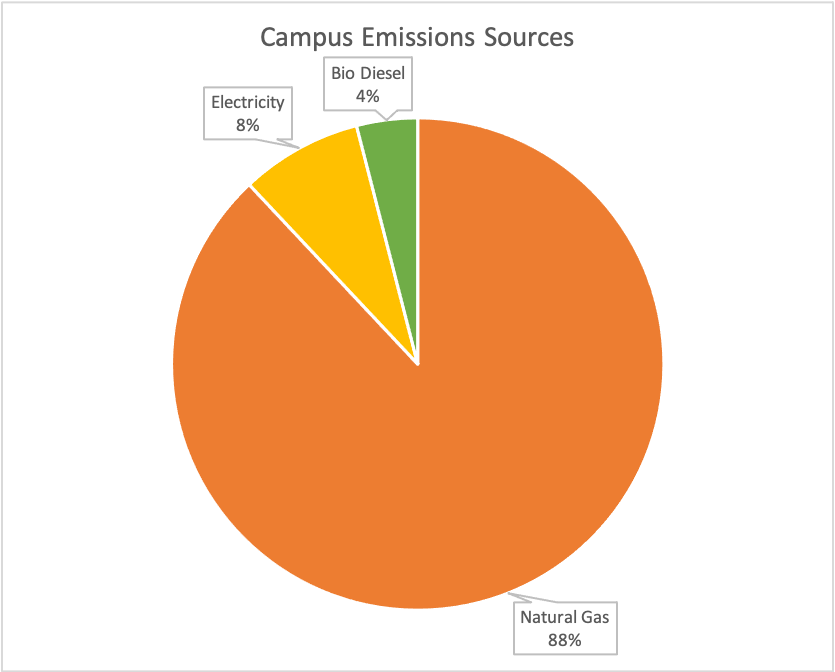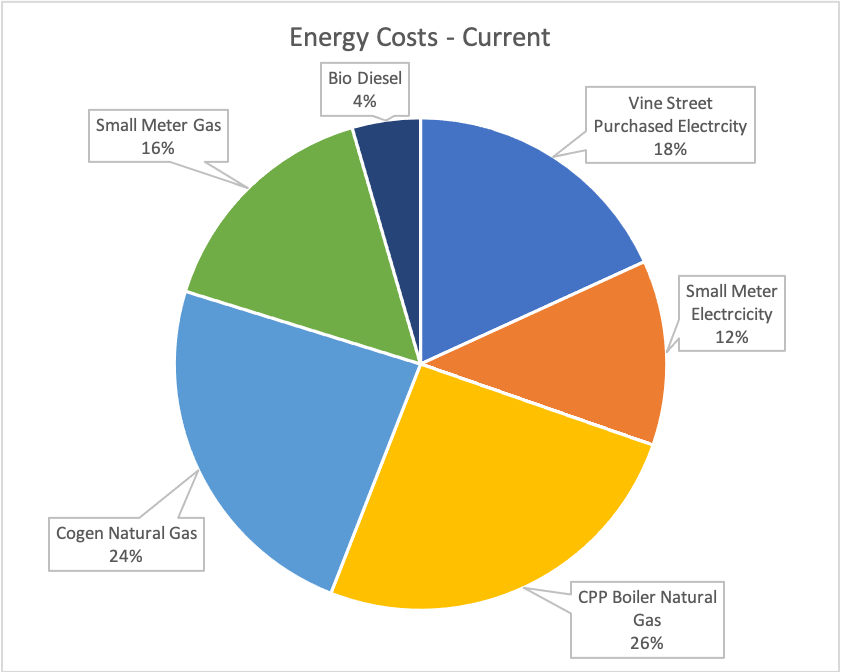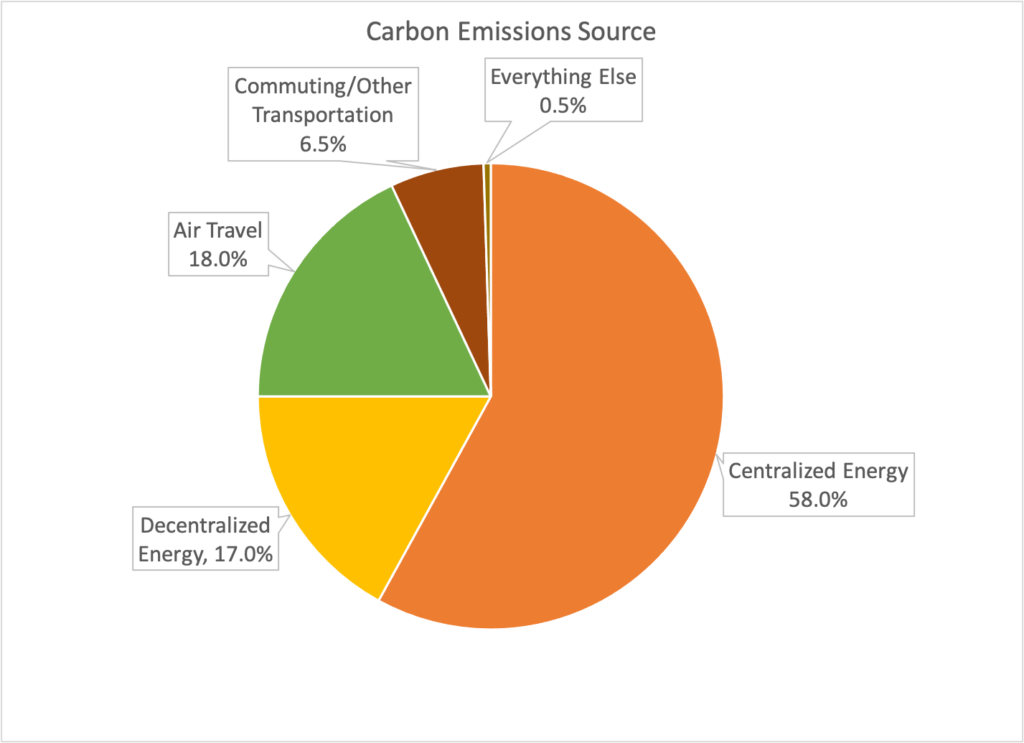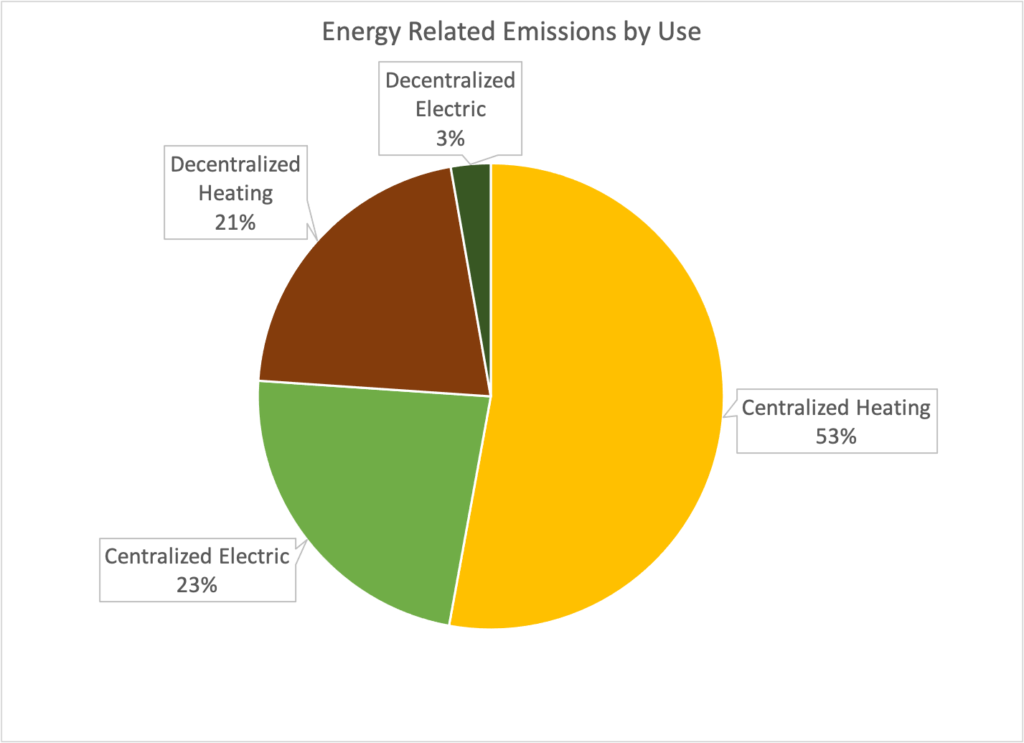


Objectives
Wesleyan shall achieve carbon neutrality for all greenhouse gas emissions before 2035. The following objectives move Wesleyan in the direction of a campus that emits zero carbon.
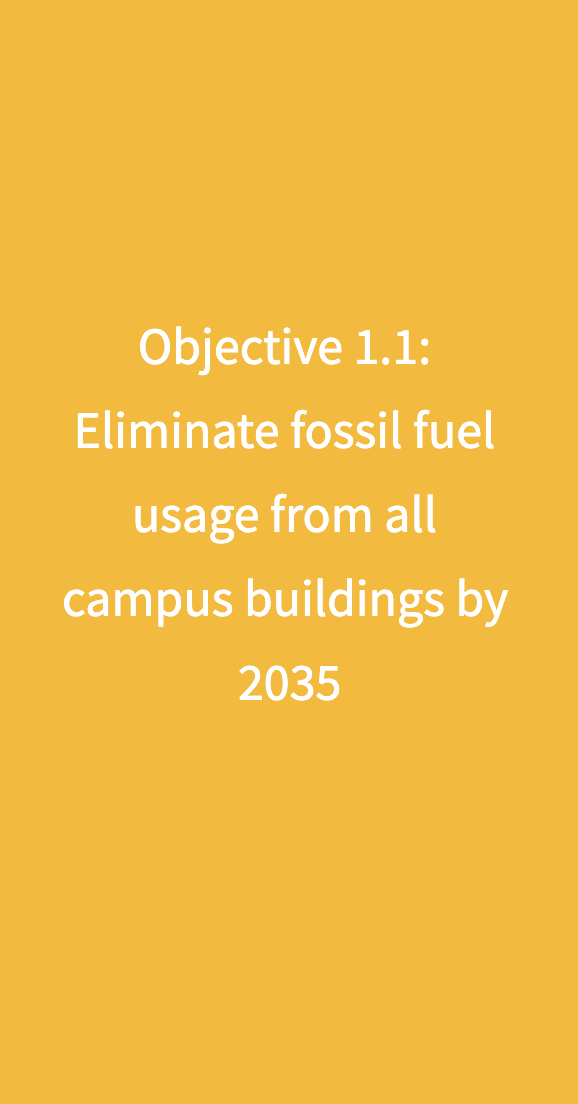
To achieve zero fossil fuel use, Wesleyan must electrify new and existing building heating systems and transition to renewable electric sources for all building energy use (heating, cooling, and electricity). In constructing and renovating buildings, Wesleyan has the opportunity to dramatically increase energy efficiency and conservation by following rigorous sustainability standards in building renovation and new construction. To maximize energy efficiency, perform envelope improvements, including insulation and window replacements, and reevaluate space usage.

Transportation, including air travel, commuter, and ground travel, is Wesleyan’s second largest emissions source. Purchasing offsets for these emissions is an effective way to ensure that carbon emitted into the atmosphere will be offset by a carbon sink, such as through forest preservation and tree planting. Wesleyan must reduce its air travel as much as possible, while recognizing that not all air travel can be eliminated. Through a 5% fee added to all University air travel purchases, Wesleyan shall purchase locally-generated carbon offsets generated primarily from preserving forested land and planting trees.
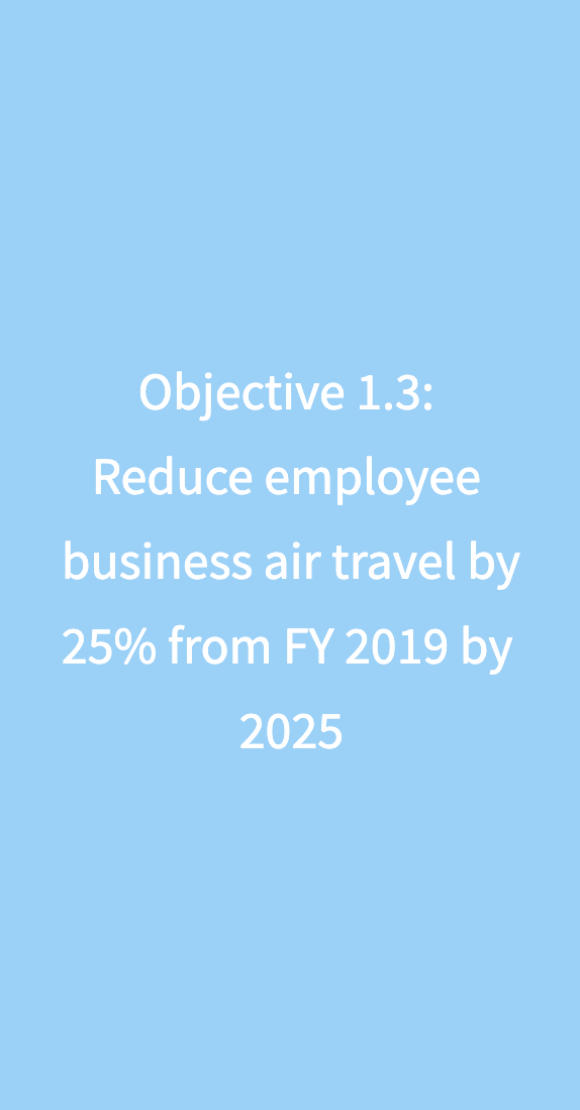
Airplanes are one of the biggest sources of greenhouse gas pollution, and Wesleyan’s business air travel must be drastically reduced in favor of virtual and ground transportation alternatives. While the reduction of air travel is important, it is also important that Wesleyan continues to welcome international students, encourage study abroad, and promote faculty and staff scholarship.
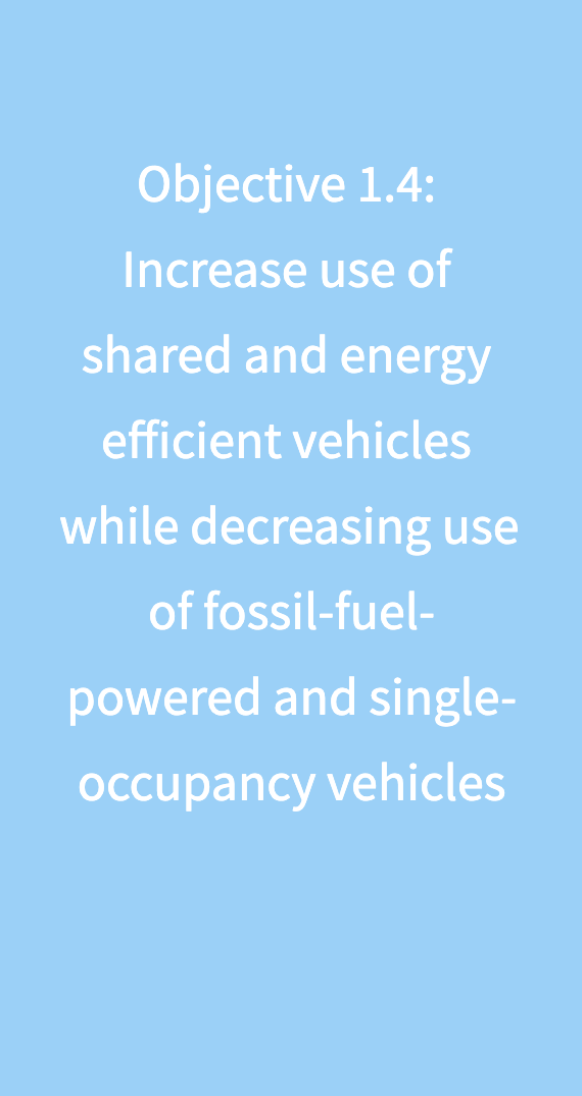
Much Wesleyan employee and
student travel is also currently done in fossil-fuel-powered, single-occupancy automobiles. Over 80 percent of employees drive alone to work each day. Many students have cars on campus, which are not only used to travel home and to nearby locations, but also to travel within campus. These emissions must be reduced drastically by transitioning to a 100% electric Wesleyan fleet, normalizing working from home, promoting and encouraging improvements in public transportation, facilitating alternative commuting strategies, encouraging walking and biking, and discouraging intra-campus car travel.
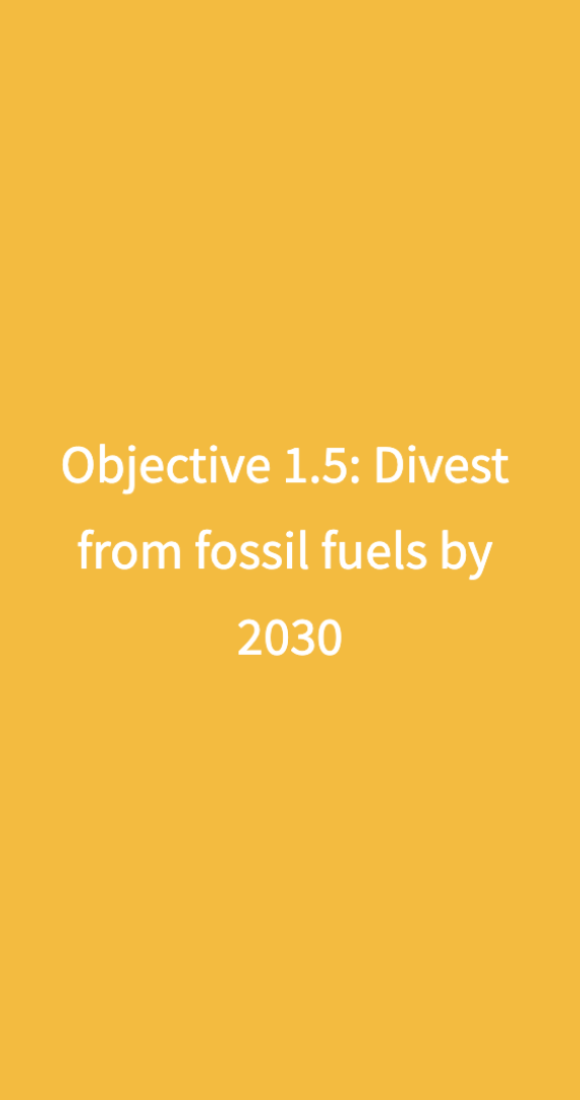
In March 2020, the Board of Trustees approved a resolution to restrict the endowment from future direct investments in fossil fuels effective immediately. Wesleyan believes that this shift will align its investment strategy with the University’s values and vision to support sustainable practices affecting people and the planet.
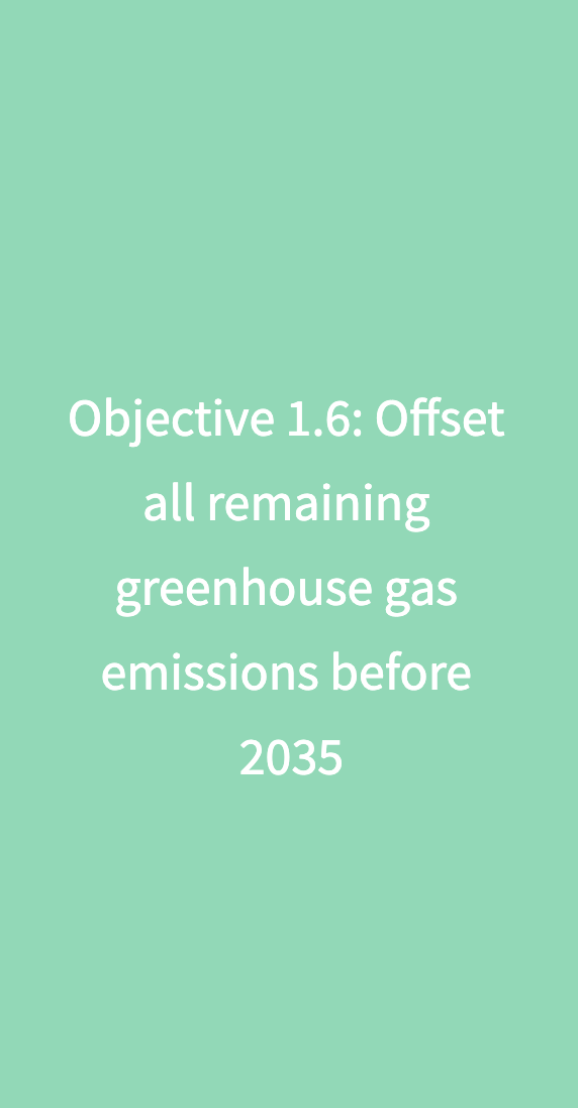
This greenhouse gas emissions target is in line with the United Nations’ goal of 50% global reduction by 2030. Wesleyan shall eliminate as much of its greenhouse gas emissions as possible through physical means. To address emissions from ground travel, commuting, freestanding building energy use, and other unavoidable sources, Wesleyan will need to purchase offsets annually concurrent with reduction initiatives.
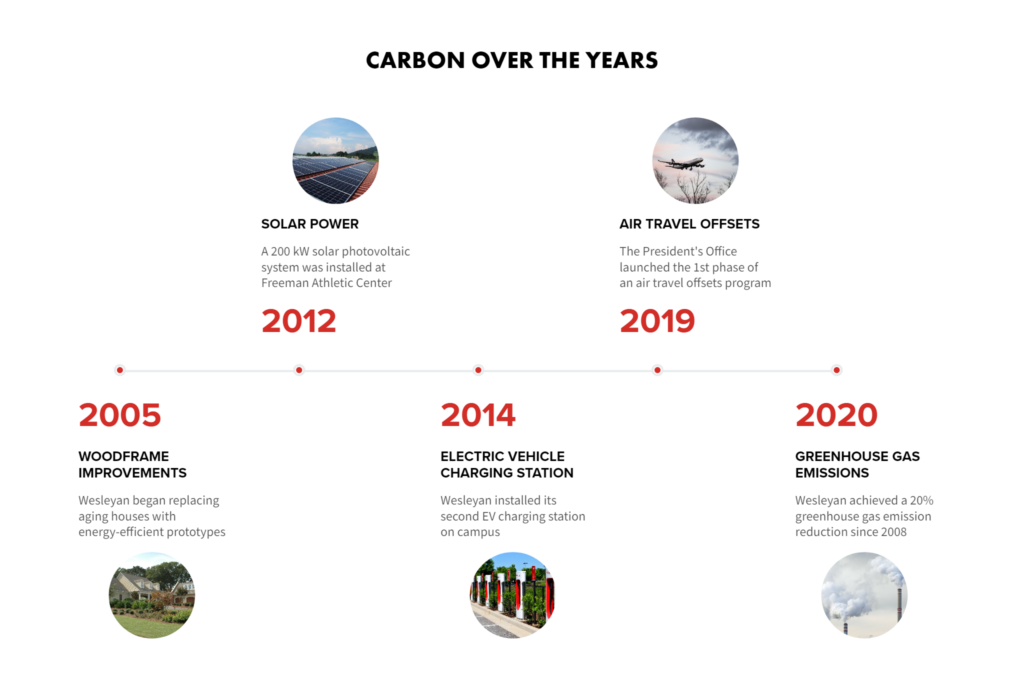
Carbon Emissions

